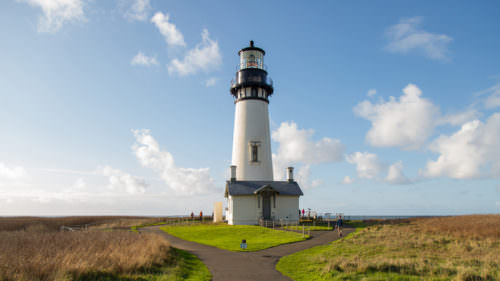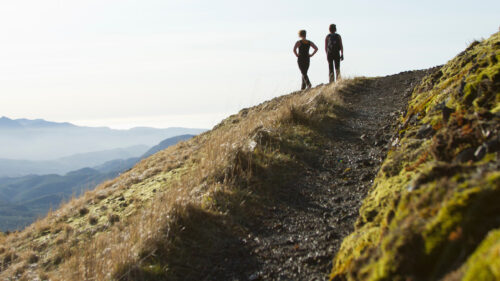Millions of years ago, basalt lava flows inched westward and began shaping Oregon’s Central Coast, sculpting wide-open headlands, leaving behind rocky islands and creating countless viewpoints. Today a number of hiking trails traverse those landscapes while affording views of migratory birds on rugged sea stacks, native plants and animals along placid waterways, and the Oregon Coast’s soaring cliffs. Here are three top trails you’ll want to hike on Oregon’s Central Coast.
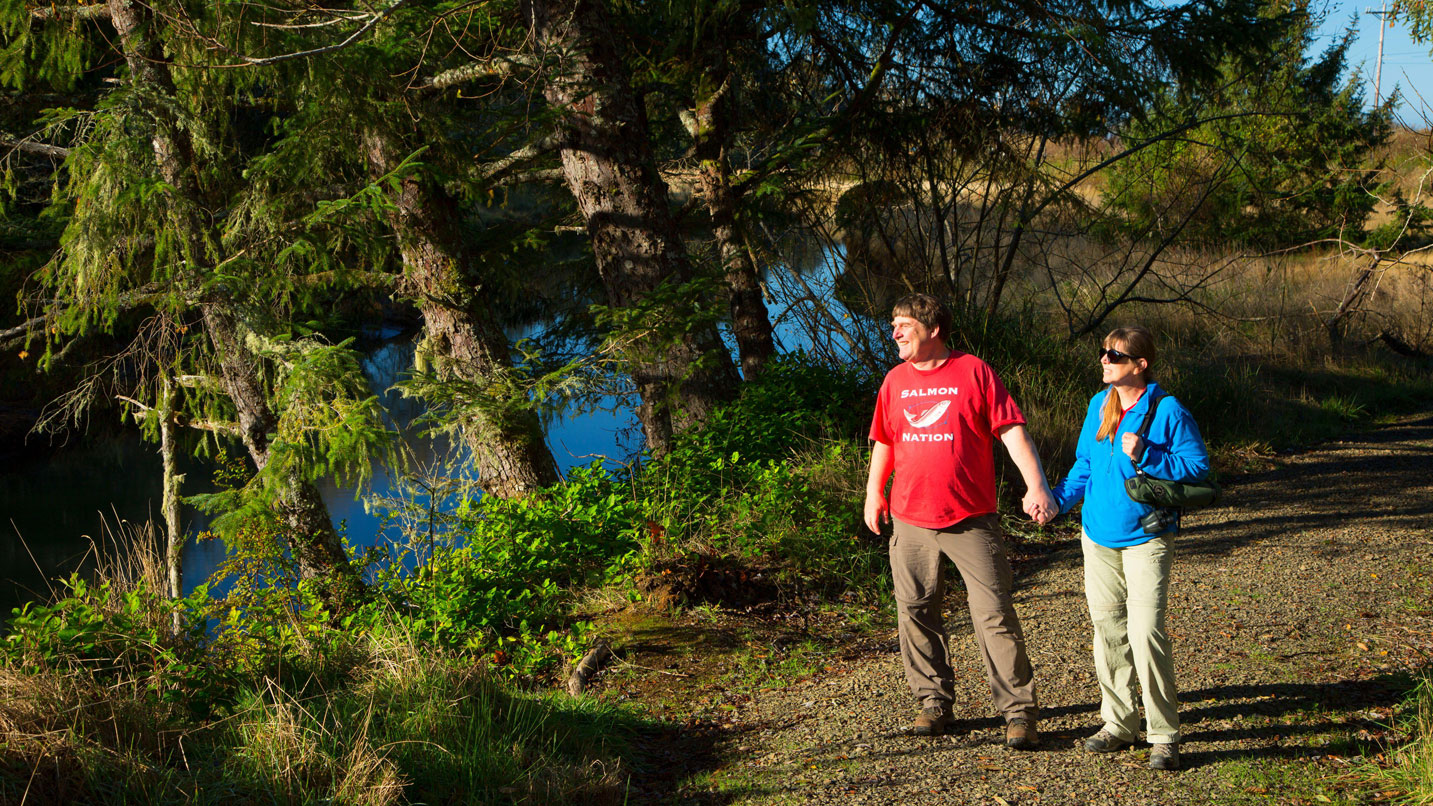
Spot Marine Birds and Other Wildlife Near Lincoln City
At the southern edge of Lincoln City, the Siletz Bay National Wildlife Refuge sits near where the freshwater Siletz River empties into its namesake bay and, soon after, the roaring Pacific Ocean. The unique conflux of ecosystems makes the former cow pasture a fascinating place to visit all year long.
In the refuge, the family-friendly Alder Island Nature Trail — open from sunrise to sunset daily — takes visitors up close to the plants and wildlife that call Siletz Bay home. In just 1 mile (round-trip), the flat, soil-and-gravel footpath occasionally hugs the shore of the Siletz River and passes through a forest of red alder, marshland, mudflats and more.
Along the way, watch for shorebirds feeding on the refuge’s clams and crabs, black-tailed deer and Roosevelt elk grazing in its meadows, river otters playing in the channel, and a wide range of birds flying between trees — including great blue herons, osprey, woodpeckers and sandpipers.
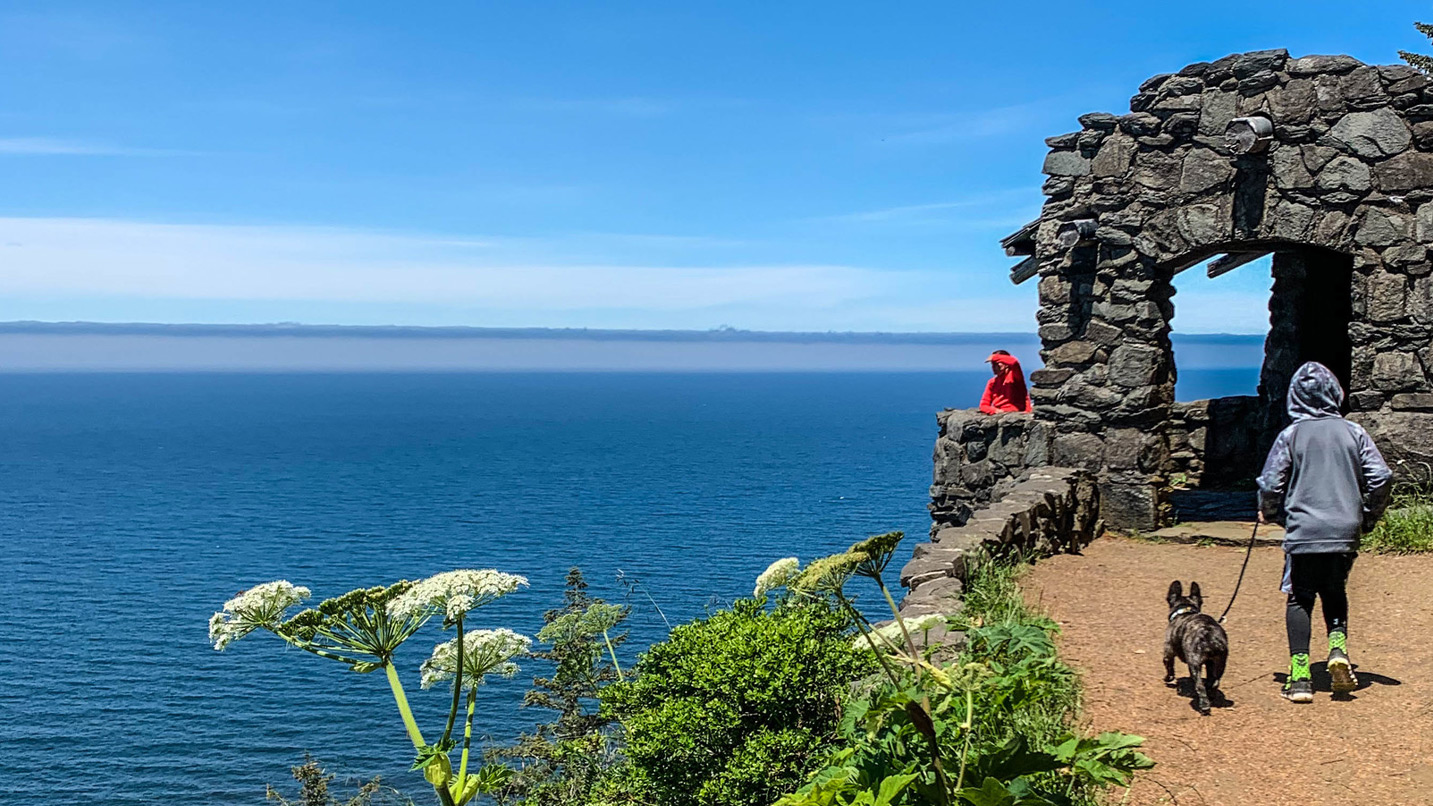
Bask in Sweeping Views at Cape Perpetua
Just south of Yachats, the Siuslaw National Forest’s Cape Perpetua Scenic Area is one of the most-visited sites on Oregon’s Central Coast. Even when the viewpoints are crowded, however, you’ll likely find solitude on more than two dozen miles of hiking trails that crisscross the basalt headland. With so much to see, the 6.5-mile (round-trip) Cape Perpetua hike is an idyllic introduction to some of the vistas and landmarks that make the spot popular.
The hike departs from the Cape Perpetua Visitor Center before heading through a forest of Sitka spruce to the shore for views of Cook’s Chasm, Thor’s Well and Spouting Horn — a collection of features that were formed by lava flows millions of years ago. Note that Thor’s Well can be extremely dangerous. Although rare, strong currents and unpredictable sneaker waves can catch people off guard and sweep them into the well. There are no railings or barriers around the natural formation. Be sure to abide by all signs and stay back from the edge.
From there the trail heads inland, passes a towering Sitka spruce tree that’s more than 550 years old and ascends roughly 800 feet to the summit of Cape Perpetua. There hikers can see for dozens of miles from inside a rustic stone shelter, built in the 1930s by the Civilian Conservation Corps. Migrating gray whales pass by in winter and spring.
Note that several paths around Cape Perpetua are wheelchair-accessible — including the Captain Cook Trail, which heads between the visitor center and the shoreline, and the Whispering Spruce Trail, which leads to the stone shelter. Browse the Cape Perpetua trail guide for information about trail length, elevation gain and features.
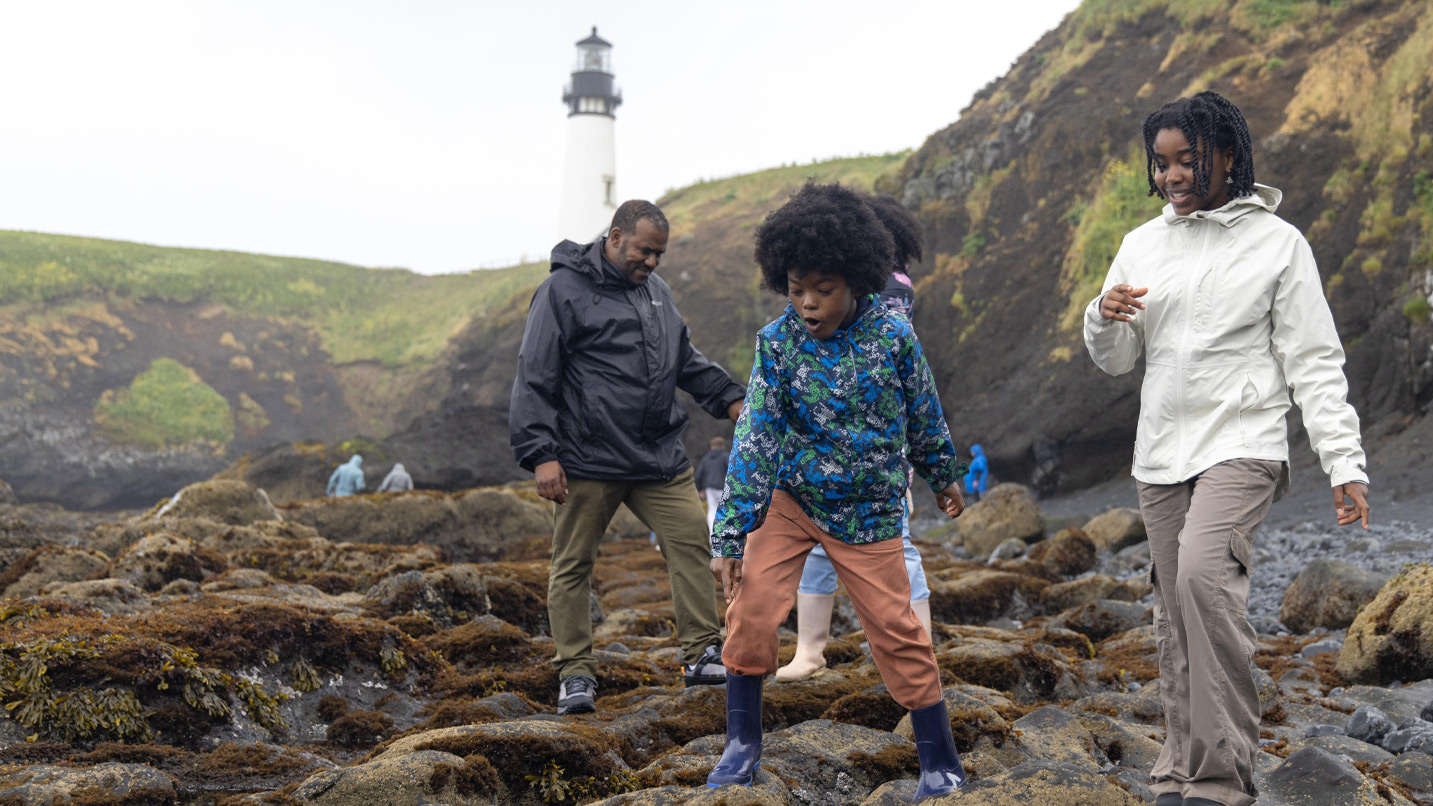
Hike Through Different Landscapes Near Newport
The namesake lighthouse is undoubtedly the star of the Yaquina Head Outstanding Natural Area just north of Newport — but several hiking trails across the headland reveal the depth and variety of its beauty.
See it all from along the 3.4-mile (round-trip) Yaquina Head hike, with numerous spur options that make it easy to shorten or lengthen the jaunt depending on your abilities, interests and free time.
Start from the parking lot at the natural area’s western edge or from Yaquina Head Interpretive Center, which offers maps, trail descriptions and information about high and low tides. A few highlights include the tide pools at Quarry Cove, wildflowers on the slopes of Salal Hill and Communications Hill, and — of course — the 93-foot-tall Yaquina Head Lighthouse, which was first lit in 1873. Watch for migrating whales in winter and spring, and keep an eye out each spring for thousands of murres and gulls that nest on Colony Rock just offshore.
Some trails, like the paved path between the westernmost parking lot and Yaquina Head Lighthouse, are wheelchair-accessible — and a wheelchair is available to borrow from the interpretive center. Note that Yaquina Head’s trails are open 8 a.m. to 5 p.m. daily.
If You Go:
- Be sure to pack the Ten Essentials — including sun protection, navigation and water — before heading out.
- If hiking on or near the shoreline, always stay on the trail, and never turn your back on the waves.
- Check ahead to see if your desired trail requires a pass or permit and which types of passes are accepted.
- Always practice the seven Leave No Trace principles to protect the Oregon Coast’s landscapes. That includes planning ahead, disposing of waste properly and giving wildlife plenty of space.
Use the Oregon Department of Transportation’s TripCheck tool for road conditions, construction updates and live traffic webcams.
